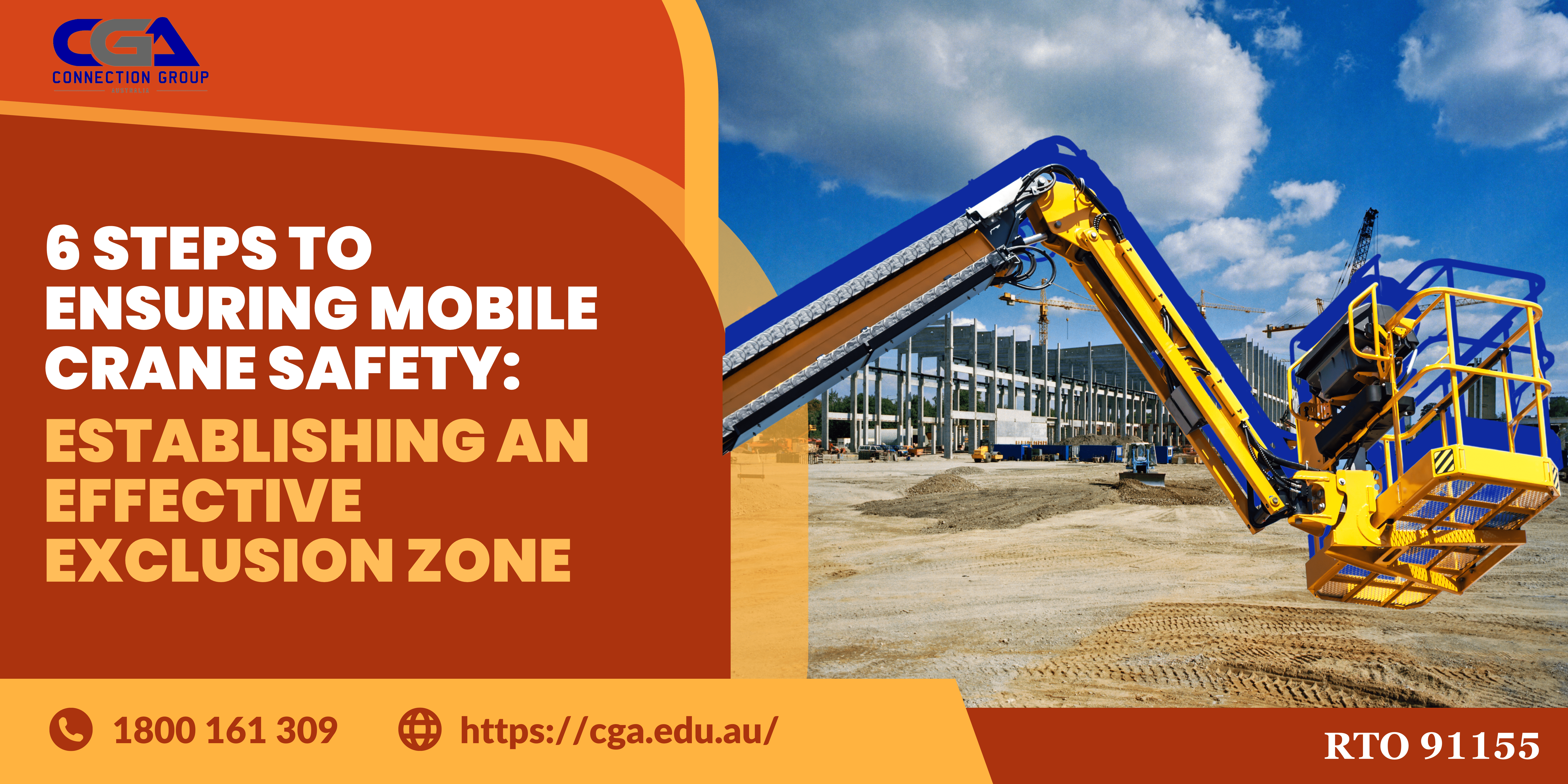Mobile cranes play a pivotal role in various industries, enabling heavy lifting and essential tasks. However, the operation of mobile cranes entails inherent risks that require meticulous safety measures. Establishing a robust exclusion area is a key safety practice in mobile crane operations. In this comprehensive guide, we will delve into the six vital steps to crafting a secure work environment around mobile cranes, with a strong focus on adhering to on-site safety protocols. Learn more about safely operating cranes with the following steps:
Step 1: Grasp the Exclusion Area Concept
At the core of crane safety lies the concept of the exclusion area. This designated space guarantees a safe distance between the mobile crane’s operation and nearby personnel, equipment, and structures. Grasping the pivotal role of the exclusion area is the first step in safeguarding your team and assets during crane operations.
Step 2: Define Exclusion Area Dimensions
Personalisation is vital when determining the dimensions of the exclusion area for cranes. Aspects like the crane’s lifting capacity, boom length, and load type substantially influence the right exclusion area measurements. Rely on industry standards, regulatory guidelines, and the crane manufacturer’s recommendations for accurate calculations.
Step 3: Clearly Mark the Exclusion Area
Visibility is of utmost importance when outlining an exclusion area around cranes. Utilise high-visibility markers, barriers, and signage to unmistakably delineate the exclusion area’s boundaries. Every on-site team member must promptly recognise and respect these indicators, nurturing a safety-centric culture.

Step 4: Prioritise On-Site Training
Empowering your team with knowledge forms the foundation of effective crane operation. On-site training tailored to mobile crane operations is invaluable. Collaborate with respected training providers offering comprehensive programs covering exclusion area principles, safe crane operation techniques, emergency protocols, and risk mitigation strategies.
Step 5: Establish Communication and Signage
Effective communication underpins any safety protocol, especially in crane operations. Develop clear communication strategies to notify personnel when the crane is in operation and the exclusion area is active. Deploy prominent signage to underscore the exclusion area’s significance and convey the importance of adhering to safety protocols. To comprehensively reinforce this vital communication framework, the strategic placement of conspicuous signage plays a pivotal role. These prominently positioned signs not only serve as visual anchors but also serve to underscore the paramount significance of the exclusion area. By vividly conveying the message of unwavering adherence to established safety protocols, these signs act as steadfast guardians of well-being.
Step 6: Continuously Monitor and Enhance for Mobile Crane
Safety evolves over time, demanding continuous enhancement. Routinely assess the efficiency of your exclusion area procedures. Engage crane operators and on-site personnel for feedback and insights into refining safety measures. A proactive stance towards improvement showcases your dedication to fostering a safer and more productive work setting.
A Culture of Safety and Excellence Building a secure work environment around mobile cranes rests on collective responsibility that requires unwavering commitment. By embracing these six vital steps and embracing rigorous on-site safety practices tailored to mobile crane operations, you elevate workplace safety and mitigate potential risks. Remember, cultivating a culture of safety is an ongoing journey, necessitating knowledge, diligence, and the combined dedication of all team members.
Ready to prioritise mobile crane safety? Contact us to learn how our specialised on-site training programs can equip your team with the skills and knowledge needed for secure and efficient mobile crane operations
In wrapping up, integrating these six steps into your mobile crane operations and ensuring proper training forms a bedrock of safety, efficiency, and excellence that benefits both your team and the broader workplace.

